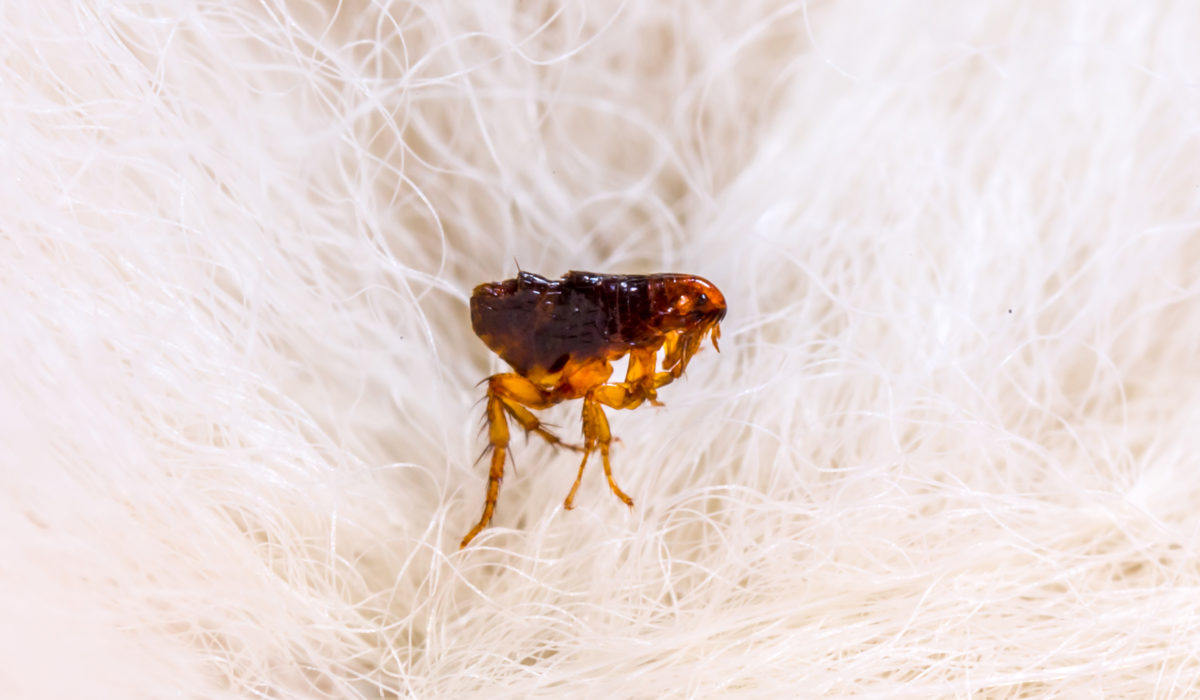Nothing gives us the imaginary (or real!) itches like knowing that a pet has fleas. These pesky critters can be a bit tricky to eradicate once they take hold so a consistent approach is needed. For every flea that you see on your pet, there may be up to 2000 eggs in the environment, so don’t expect them to go away instantly, it can take some work.
Where does my pet catch fleas from?
Fleas are species specific, there are cat fleas, dog fleas, rabbit fleas, and many more. That said, individual fleas may jump to a different species pet in the same household and bite them but they are unlikely to survive and breed unless they return to their host species. This is why it is important to treat all pets in the family at the same time to avoid fleas ‘hiding out’ on untreated pets.
Fleas can be transferred in the environment from other pets and wildlife. So, if your pet ventures outside they may pick up an unwanted hitchhiker from the grass or other animals and bring them home.
How do I know if my pet has fleas?
Pets that can be affected by fleas include:
- Dogs
- Cats
- Rabbits
- Ferrets (commonly affected by the cat flea)
- Guinea pigs
- Rats and Mice
The common signs which may indicate that your pet has fleas include:
- Your pet suddenly scratching, chewing or biting at themselves
- Small black dots on their skin, fur or bedding (which may be fleas themselves or flea dirt, the digested blood the fleas have fed on)
- To check if any small black dots are flea dirt or just dirt, place some on a wet paper towel, where flea dirt will turn red
- Red or crusty patches of skin (some cats and dogs have an allergy to flea saliva which makes them super itchy and sore)
- If your pet has a flea allergy, it can take just one flea to flare up a big reaction
- Seeing fleas hopping on your carpet or furnishings
- Patchy hair loss (where your pet may be excessively scratching or licking)
- Small itchy bite marks on family members
- If your dog or cat has been diagnosed with tapeworm (or you have seen flat, white, rice-sized, wriggly bits in their poo) then they may have caught tapeworm from ingesting a flea
Is prevention necessary?
Although warmer weather is assumed to encourage higher flea populations (flea eggs like to hatch with warmth, humidity and vibration), we see flea infestations occurring year-round not just in the Summer months. This is because of the use of heaters, rugs and carpets that tend to create cosy flea breeding spaces.
Not only do fleas annoy our pets, they can leave us with a few itchy reminders of their presence too.
For this reason, year-round flea prevention is recommended. There are a lot of flea products available and many treat multiple parasites, so ask your vet for a product that suits your pet and their situation.
Follow this treatment plan thoroughly for a flea-free home:
Regularly:
- Treat all animals in your household with a veterinary product suitable to their species all year-round, check the label for how often this should be done as products differ (plus, some dog products can be toxic to cats and rabbits so ask your vet first and follow the label)
If you see fleas on your pet or in the house:
- Throw out any cushions or bedding that may be severely infested
- Wash pet bedding and all household bedding in hot water (over 60C) for at least 10 minutes
- Clean out your pet’s bed
- Clean out the kennel, basket or rabbit hutch
- Vacuum lounge chairs and cushions
- Vacuum the car
- Vacuum or wash rugs
- Bin or burn the vacuum bag immediately after vacuuming
- Speak to your vet, as there are some extra medications which can be used (in conjunction with your current flea preventative) to help eradicate a current infestation or reduce the itch that your pet is experiencing
Keep your chosen parasite preventatives handy by storing them in your Vet in a Van – Navigator Pet First Aid Kit






